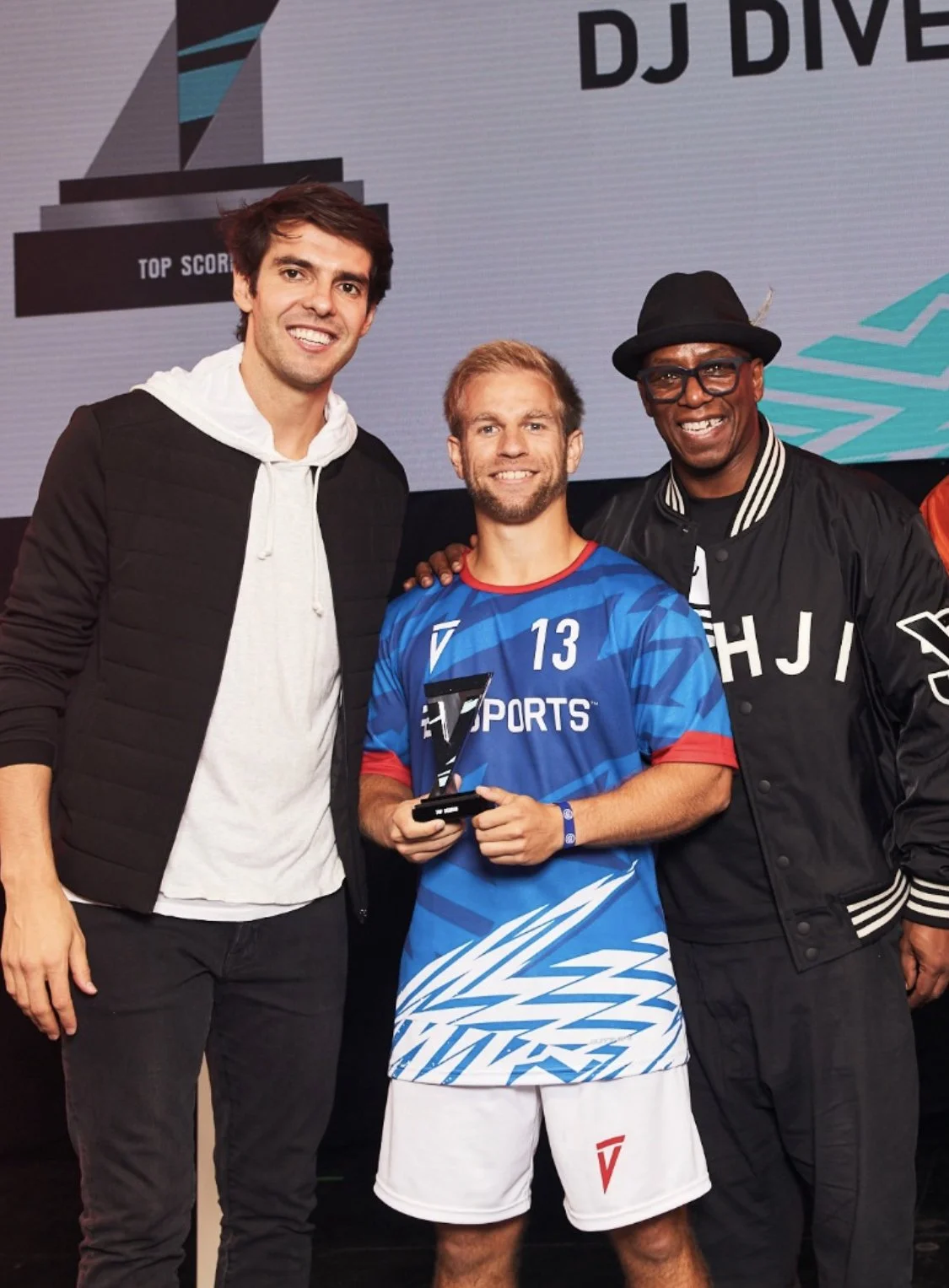How to Improve as a Striker in Soccer
How to Get Better as a Striker
As a full-time academy and private soccer trainer, I can tell you—being a striker is one of the most thrilling positions in soccer. You’re the player everyone looks to when it’s time to deliver that game-winning goal. But scoring goals takes more than raw talent; it requires precision, confidence, and a whole lot of hard work. Whether you’re a young player aiming to sharpen your skills, a parent looking to guide your child, or a coach working with aspiring forwards, here’s how to become a clinical striker. ⚽
With Kaka and Ian Wright Phillips being presented Top Scorer award at FIFA Volta world debut in London. These two combined had over 800 goals for club and country
Train with a Team - Why Training with a Team is Crucial
Strikers thrive in real-game scenarios, so training with a team is invaluable. It helps you adapt to the chaos of matches and build chemistry with teammates. Here’s what to prioritize:
Improve Your Finishing: In training, focus on scoring from different angles and distances. Work on one-touch finishes, volleys, and headers. When practicing with teammates, simulate game scenarios by receiving through balls or crosses under pressure.
Know where the goal and goalkeeper are at all times: You’ll rarely have an open net in team training or games. Take advantage at practice and maintain awareness of the gk and goal. Look to score in ways that the gk won’t be able to stop. For example, in a break away situation instead of smashing the ball towards goal, you might fake at shot as the gk closes. If the gk dives, simply dribble by the other way and pass it in… easy.
Perfect Your Movement Off the Ball: Great strikers know where to be before the ball arrives. During team drills, practice timing your runs and anticipating where the ball will be. Communicate with your midfielders and wingers so they know where to deliver passes.
Link-Up Play: In modern soccer, strikers need to do more than score. Practice dropping deep to receive the ball, holding up play, and laying it off to advancing teammates. Quick one-twos with midfielders or wingers can unlock defenses.
Learn to Press: Strikers are often the first line of defense. Practice pressing defenders and goalkeepers to force errors. This shows your coach you’re willing to work hard for the team. Plus, there’s nothing better than scoring after stealing the ball! 😏
Solo Training Tips for Strikers
When you’re on your own, focus on refining your technique and staying sharp. Here are some ideas:
Shooting Drills: Find a goal or target and practice shooting from various positions. Work on accuracy first, aiming for corners, then add power. Use both feet—a two-footed striker is nearly unstoppable.
First Touch: Use a wall or rebounder to improve your first touch. Control the ball with different parts of your body—inside foot, outside foot, chest—then quickly set up for a shot or pass.
Aerial Ability: Headed goals win matches. Practice heading technique by tossing the ball up for yourself or asking a partner to deliver lofted passes. Focus on directing your headers rather than just powering them. This is especially beneficial if you’re a bigger, taller, athletic striker.
Penalty Practice: Penalties are high-pressure situations, and strikers often take them. Practice placing the ball in the corners with confidence. Create your own mental routine to stay calm under pressure.
Agility and Speed Work: Strikers need explosive speed to beat defenders. Set up cones for sprints, quick turns, and agility drills. Combine this with ball work to simulate match conditions. Resistance sprints like hills or speed parachutes can be great for enhancing accelation too.
Study the Best Strikers
Take inspiration from legends like Erling Haaland, Robert Lewandowski, Lautaro Martinez, Harry Kane, or Sam Kerr, Sophia Smith, and Alexandra Popp. Watch how they position themselves, their composure in front of goal, and how they adapt to different defenders. Try to replicate their movements and decision-making in your own game. Don’t just watch highlights or top goals. Head to youtube, enter your player’s name + full match. What their movements off ball and how they get into position to score. Notice the common and different ways they score their goals.
For Parents and Trainers
Parents, encourage your striker to stay positive and keep working hard, even if they miss chances. “Just keep shooting!” Confidence is key for forwards, and mistakes are part of the learning process. Trainers, design drills that mimic real-game situations, like quick transitions, 1v1 duels, and finishing under pressure. Ensure the player is scoring tons of goals in training and not getting discouraged.
Final Thoughts
Being a striker is as challenging as it is rewarding. Whether you’re training with a team or solo, focus on technical excellence, tactical awareness, and physical speed, quickness, and strength. Keep practicing, stay confident, and always be ready for your next big chance. The team is counting on you to deliver—now go out there and score some goals! 🚀
